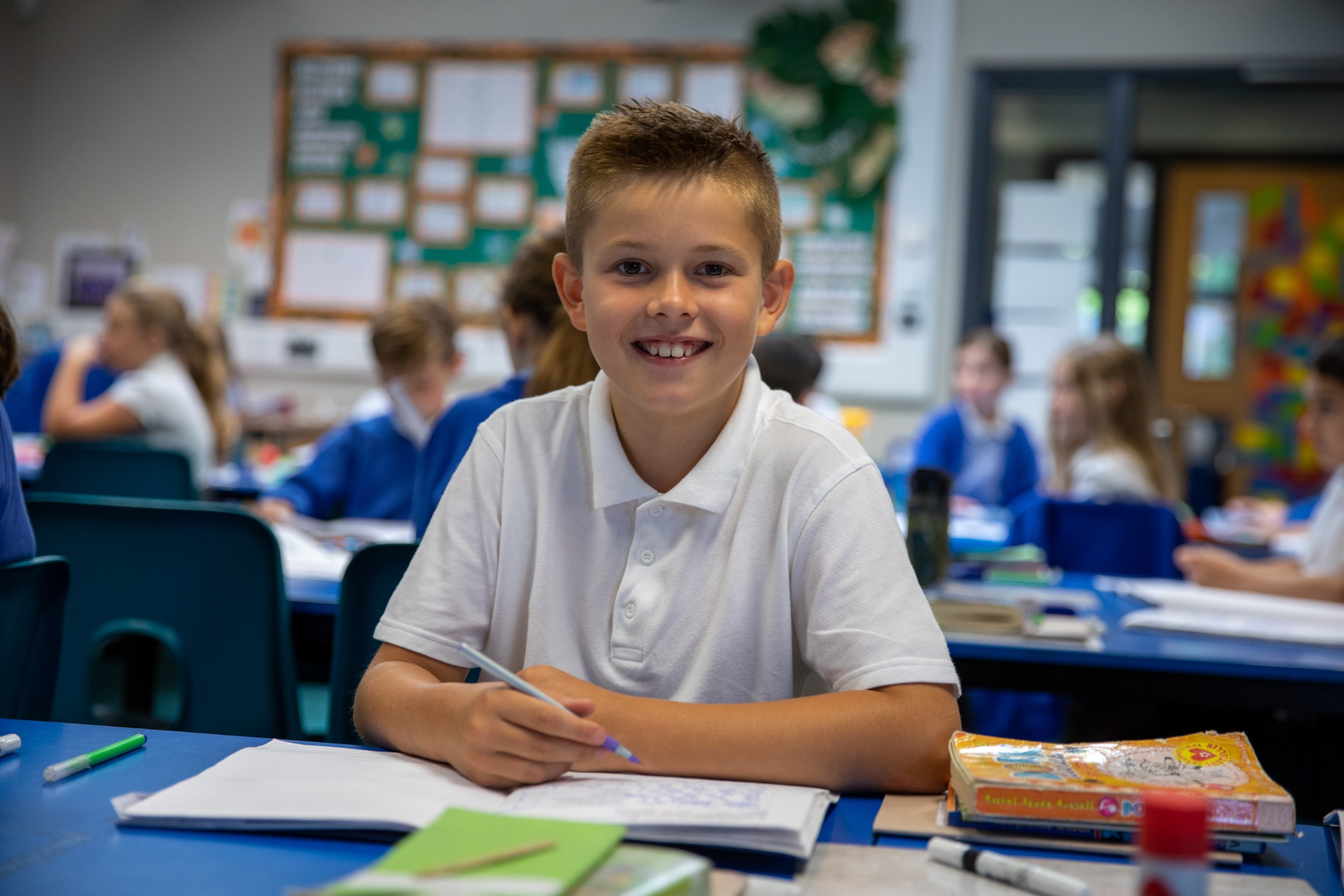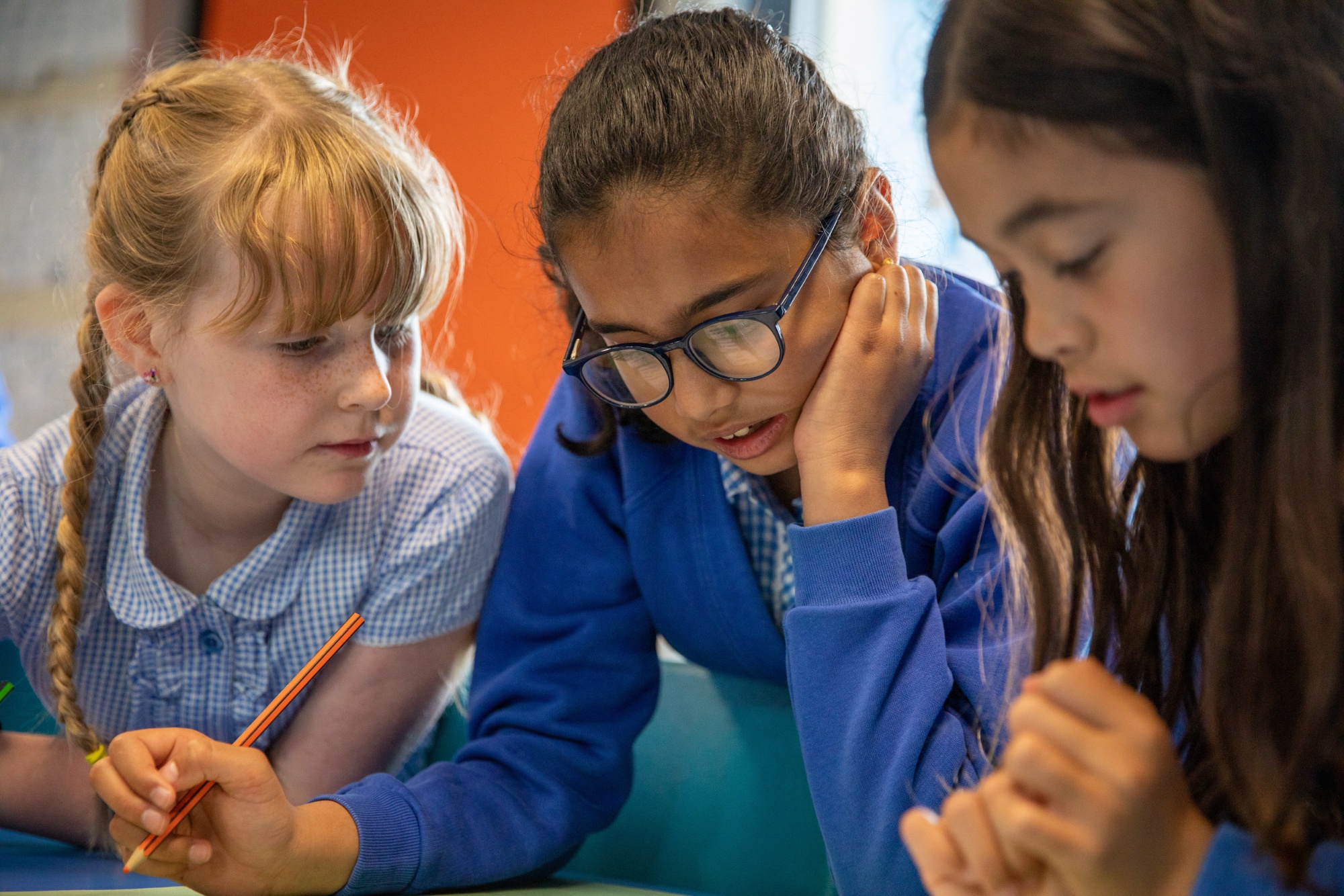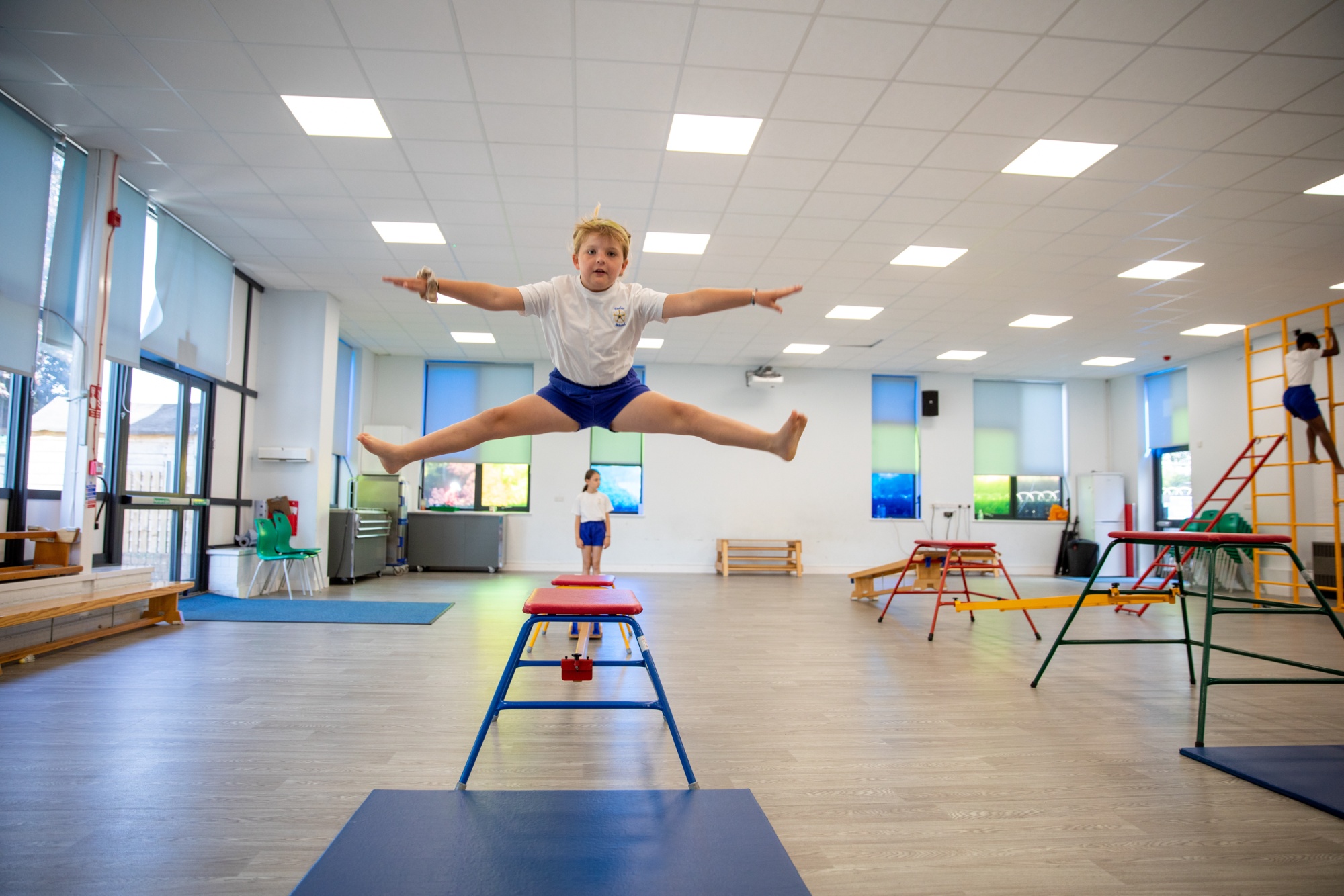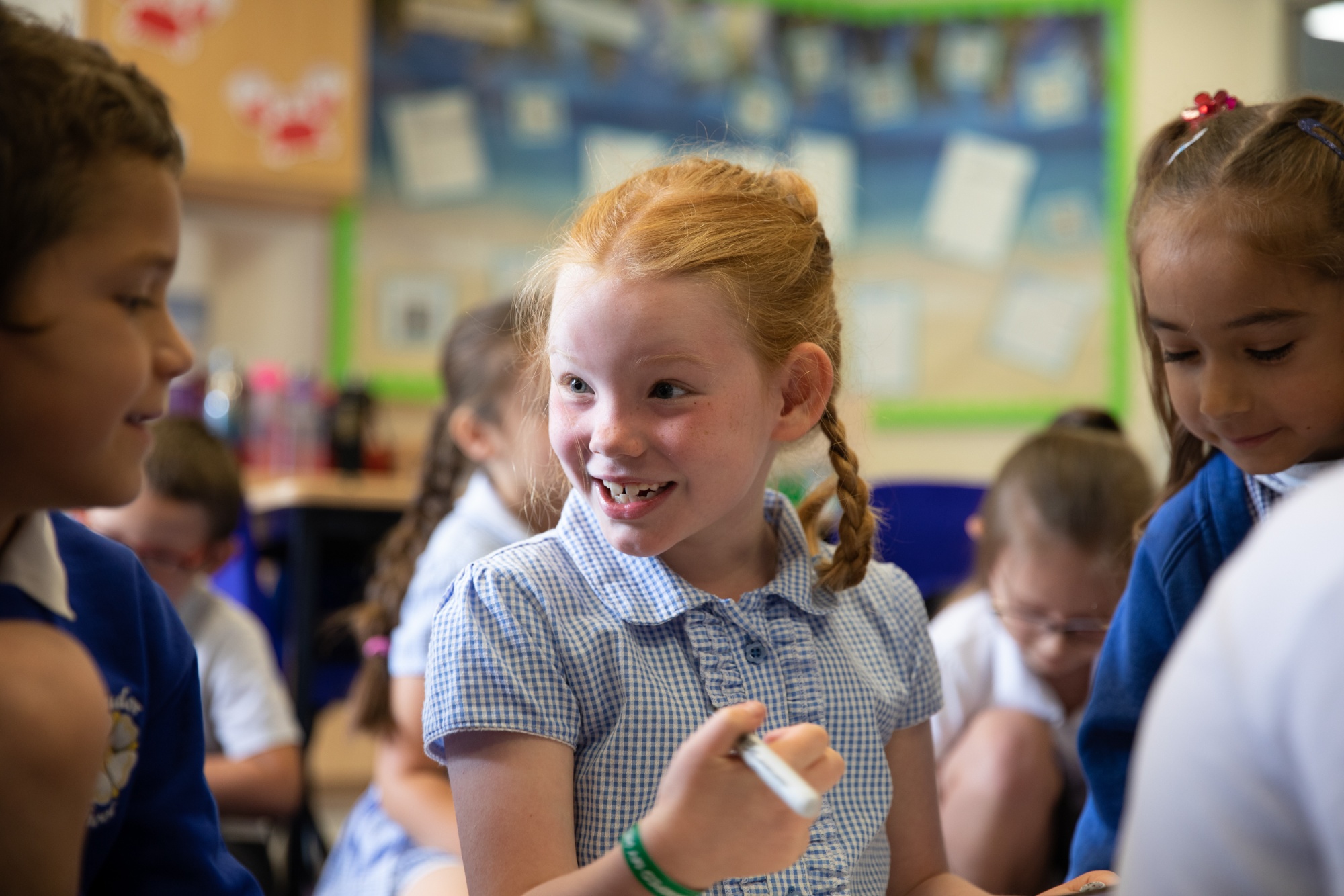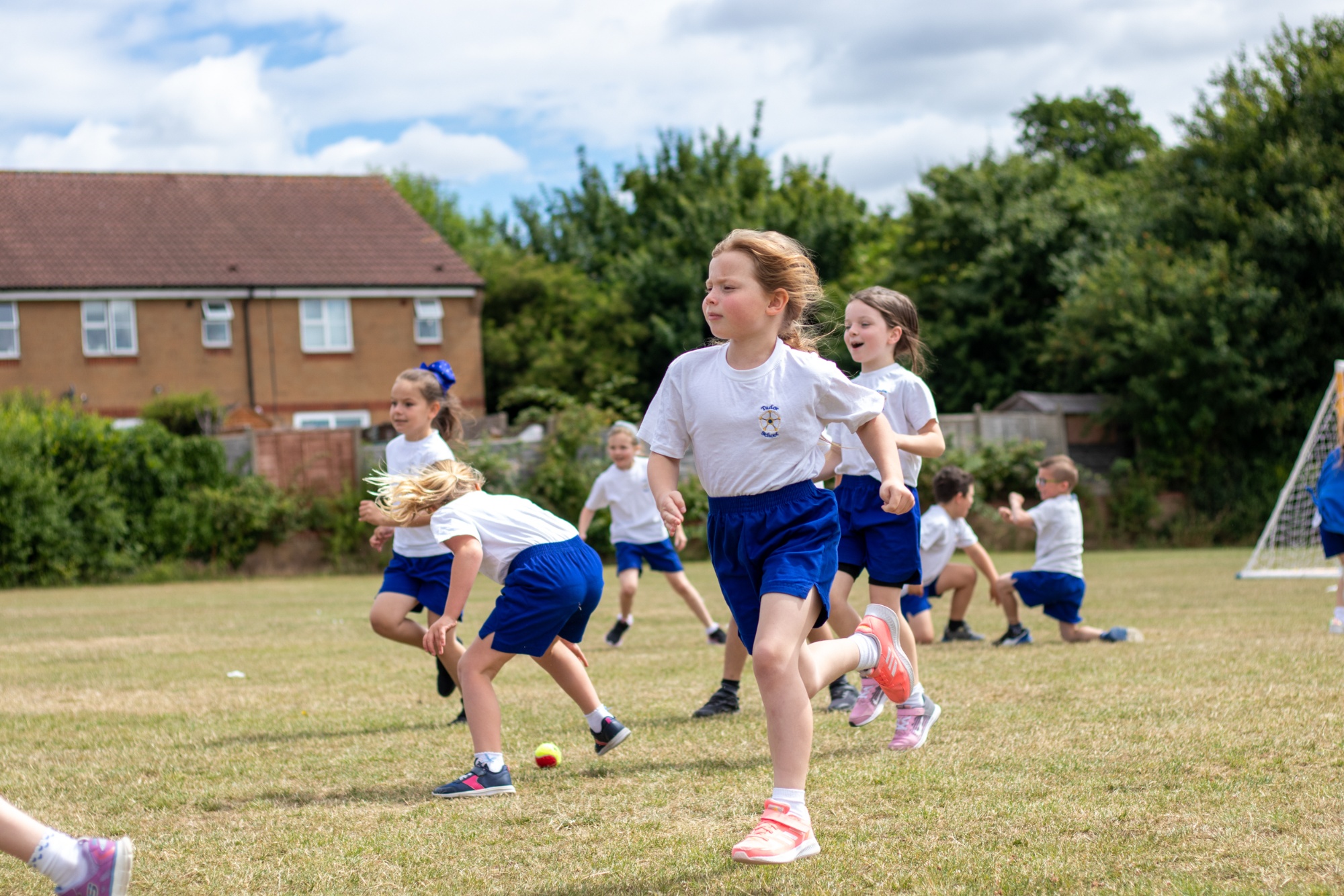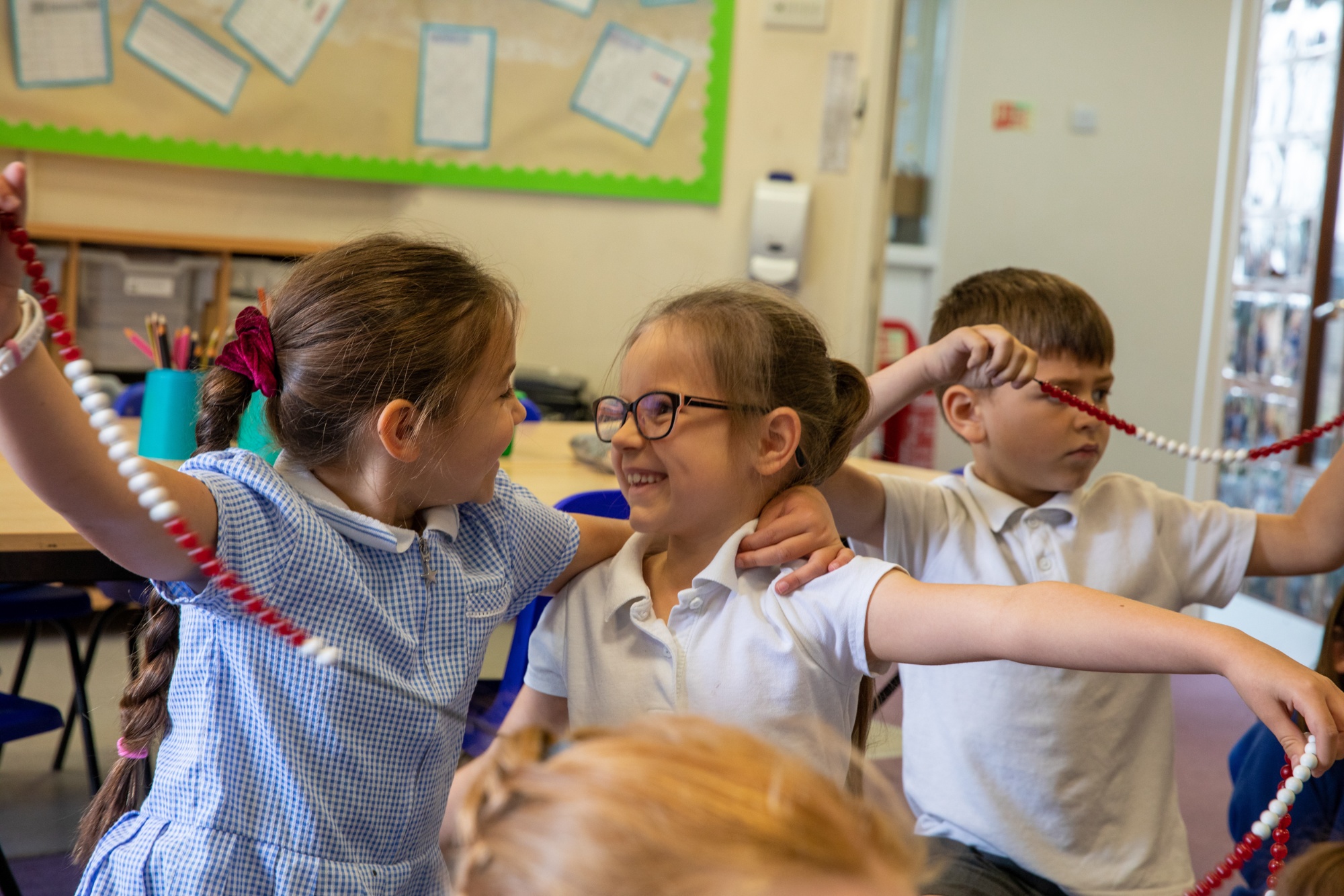Maths at Tudor- 'From Strong Foundations'
At Tudor Primary, the mathematical learning that children are presented with has changed a great deal in recent years. Rather than being restrained (or restricted) by content, the children are enabled to respond to mathematics in many forms. Being a ‘mathematician’ is not, simply, completing mathematical tasks: it is the ability to formulate and choose an appropriate, efficient response which utilises a true understanding of the problem or situation.
Have a look at our bespoke school document 'How Mathematics is taught at Tudor' that can be accessed from this page.
Our calculation policy can also be downloaded below. This can help you identify approaches that are used in each year group in school.
Have you looked at the outcomes that our children ACHIEVE in mathematics at Tudor? If you haven't follow this link...
Intent:
- Children will access and learn the maths curriculum through the school's mastery approach.
- We provide all pupils with high-quality opportunities to access all areas of the maths curriculum.
- Pupils to become fluent in key mathematical concepts, applying these skills in problem-solving and real life scenarios.
- Children will be confident in using mathematical vocabulary and representations to show their thought processes and reasoning.
Using Essential Maths as a key driver for our planning of mathematics at Tudor Primary, we aim to provide children with deeper knowledge and understanding of mathematical procedures and related concepts. As such teachers identify the key learning for each class and plan to secure these. Learning sequences are developmental and, depending on the concept, a good proportion of time will be spent securing key learning. Teachers will use their judgement about when it is the right time to move on.
Implementation:
- Mastery-based approach (CPA, varied fluency, whole class)
- Learning sequences that are adapted through high quality assessment for learning
- Herts ESSENTIALmaths planning is used as the 'spine'
- We refine and adapt out approaches (Class teachers are empowered (and expected) to respond to the needs of the children
- Concrete, Pictorial, apporaches are oredered effectively to ensure a full understanding- we are not driven by tricks or shortcuts!
- Our 'Tudor Question Quadrant' used for a 'rich-diet' (see below for more information)
- Maths skills are used (and extended) across the wider thematic curriculum
- Fluency/arithmetic skills revisited regularly to ensure children have the cognitive tools they need
- Adaptations are varied and pertinent to learning
What does this look like in school?
- Whole class direct teaching with clear and progressive modelling of concepts and procedures with sequences of varied examples
- The consistent use of core manipulatives and representations to support ability to access learning and to deepen children’s understanding (see further information below)
- Rehearsal of core facts and strategies through the development of frequent ‘intelligent rehearsal’ (see section below on how we have refined our approaches to practising multiplication)
- Rich mathematical talk is given high status and supported by the learning environment and teachers’ questioning
- Emphasis placed on ‘learning’ through reasoning, developing multiple strategies and concepts towards understanding
- Pupils ‘grappling’ with learning mathematical concepts
- Challenge for pupils grasping concepts quickly is provided through depth and breadth of experience
- Daily opportunities to reason and problem solve (see section on the maths quadrant grid at Tudor below- a rich diet of maths).
Additional information below on how we implement the maths curriculum at Tudor will draw together some of the important concepts behind our facilitation of mathematics learning as well as provide some further examples of what mathematics looks like in the school.
Mathematics-A Visual Understanding…
Central to our philosophy is that mathematical content is given in a logical order.
Initially it is enacted with concrete materials, later it is represented by models (pictures) and then by abstract notation.
Concrete - Pictorial - Abstract
Source- Jerome Bruner: To learn any abstract concept, you must always begin with a concrete representation
Visualization is vital- ‘If all we care about is the answer, we are not exposing children to the opportunity to visualise.’
In time, higher-attaining children become less reliant on visual representation. What is important to note, is that studies prove that those children who draw diagrams (compared to those who do not) enjoy significantly more success.
At the bottom of this page, feel free to download the presentation slides from an information workshop to parents in KS1.
The reasoning…
In the past, children looked on mathematics as a subject in which they would simply solve numerical or visual problems. Teachers would give the children potential methods to approach these but, on close inspection, it became increasingly clear that these were not always the most effective way both in terms of efficiency or understanding.
An example of this was with the ability to understand teen numbers. Children counted from 1 and the ability to ‘find an amount’ was reliant on the verbal ability to reach the number required.
Children were ‘proving’ their understanding of 15 by counting up to 15 from 1.
The majority of children were unable to confidently express (or utilize) an understanding that 15 was in fact 10 and 5. The ability to count on from 10 was non-existent and children were unable to augment values of numbers and this proved inefficient as well as problematic for many pupils. To overcome this situation, a focus for all the children is the ability to subitize numbers/ values.
Subitizing is a term that was coined by the theorist Piaget and defined the ability to instantaneously recognise the number of objects in a small group without the need to count them.
It is important to note the philosophy of Bruner highlighted above so the value being looked at should be a concrete or visual representation rather than an abstract number. Both perceptual and conceptual subitizing are taught to the children. Perceptual subitizing relates to the ability to see the number (‘it’s 8’) whilst conceptual subitizing is recognising values due to additional understanding (‘it’s 8 because there’s 2 missing from 10’/’ it’s 3 and 5’).
Subitizing activities take place regularly in the EYFS (and parents are given resources as soon as they start at Tudor) and there is a focus on children being able to talk about values of numbers rather than simply counting and/ or giving an overall number.
This has had a big impact on recognition of place value as well as number systems. Children should be given opportunities to learn about a range of number systems rather than simply driven towards ‘base 10’. If children develop a deep understanding of place value, they are more able to use this understanding with subsequent learning.
There is also a large focus in the EYFS on number bonds and this is supported by the provision of subitizing activities. Children develop the conceptual ability to recognise that ‘6 is 10 with 4 missing’ and this recognition is vital when the children are able to reason solutions 6 + 5 is (6 and 4) +1.
Numbers above 10 prove less problematic when the children are able to recognise the value of 10. Children are enabled to recognise a ‘complete’ 10 and an additional 8 give a value of 18.
Visual Resources for Visual Understanding…
To develop the understanding of place value, children are taught how to use ten frames to organise cubes. This practical resource provides a clear visual link to the subitizing understanding. Children are given guidance on how to manipulate the cubes to generate the value. Early addition and subtraction skills are also taught using the egg boxes.
As previously said, the use of the concrete apparatus must precede any use of abstract numbers as they develop the vital importance of the understanding of number bonds.
As an example, 8 + 6 becomes (8 + 2) + 4 and children are able to augment the correct answers rather than simple aggregate the answers and count from 1 (up to 14).
This becomes 10+ 4 when two cubes are moved to the left box to ‘complete the 10’.
When subtracting, children are able to remove cubes. The 10-frames can also support the teaching of inverse operations.
14 - y = 8
Start with 14 cubes. How many cubes need to be placed ‘outside’ the box for it to become 8?
Answer is 6.
Teachers are able to develop non- numerical working by using dry wipe 10 grids which enable children to show visual recognition the number problems.
It is important to note that different resources will be appropriate for different skills and the teacher should select the most effective and efficient resource for each situation. It is important to use a range of practical resources to help cement the visual understanding of the numbers. From our own research, abstract recording of numbers is not as effective for understanding due to the inability to physically manipulate the values.
Tudor Primary has a robust calculations policy which we formulated from our own classroom practice and research. The calculations policy (also available on our website) provides the ‘basic diet’ that all children should receive when approaching the computations. When appropriate, teachers are able to extend/ consolidate using related methods. Effective modelling is of vital importance when children are being taught new approaches and/ or learning effective methods for a particular area of mathematics.
Visual recording…
As children develop their understanding of number, the children are given opportunities to express their understanding in different ways. The children are provided with models to express the mathematics rather than abstract notation that simply highlights an ‘answer’. This ensures that children recognise the intrinsic links between the computations. By deepening the knowledge, the children build an ability to approach more complex (and open) maths at a later stage.
‘To build the tallest skyscrapers, we need the deepest foundations.’
The following guidance highlights how visual recording can be taught at Tudor. Bar methodology supports the visual understanding of a problem; it enables the children to recognise which calculations they should be using.
Refining our Methods:
Let’s stop creating issues for children by limiting their visual understanding’
Instead of 7 + 5 = 12,
The following is modelled:
‘This will aid the children with understanding of part/ whole representation. It is the understanding of the mathematics (not the answer) that is the key factor. This is developed with the bar methodology alongside the effective teaching of calculations. The following information highlights bar methods of increasing complexity.
Bar Model Representations
Repeated addition:
(when adding the same number)
Addition:
The bar is NOT the working; it displays the visual understanding of the problem.
Multi step problems:
William has 95p.
He has 20p less than his brother.
How much money do William and his brother have altogether?
(During studies, questions like this have proved very problematic for those children/ schools using traditional/ non-visual approaches.)
Another example involving ‘difference’
Hardeep mixes 620 litres of water with 180 litres of lemon squash to make drinks for a school fete.
He adds another 145 litres of water to the mixture. How much more water than squash did he use for the drinks?
becomes:
Once the children are able to recognise the requirements of the problem, the appropriate calculation/s can be completed.
A high level example using the Bar-Model:
The difference between 2 numbers is 516. If the larger number is 4 times the size of the smaller number, find the sum of the 2 numbers.
The problem could be shown like this:
When the working is added, it becomes:
It is important for children to say the full answer.
Other important approaches:
As well as the above, teachers enable children to use their understanding in more efficient ways. An example of how our youngest children are able to show progress is when they start to augment calculations. This is when they are able to USE their understanding of a number.
Moving from ‘aggregating’ to ‘augmenting’:
If children recognise that the values above are 4 and 3:
Aggregating = 1,2,3,4,5,6,7 Augmenting = 4,5,6,7
Mathematics- Depth and Diet- 'The Tudor Maths Quadrant'
As children progress through the school, the children are provided with a broad diet of mathematical learning which allows them to work in a range of contexts. Work can be abstract or real life as well as open or closed.
Children can only demonstrate a full understanding of a particular skill if they are able to use it in such a range of situations. Whilst the ability to complete ‘closed/abstract number problems’ is important, the ability to respond to mathematics in real life situations is vital, especially when the child has to formulate their own approach.
Using the quadrant grid below as a guide, the children are provided with a balance of learning opportunities:
If the ‘broad diet’ of mathematics is not planned for, an imbalance between the left/ right side of the grid as well as the top/ bottom hinders learning.
Analysis of a previous situation at Tudor indicated that much of the maths teaching was closed and was usually abstract in content. When children are attempting to solve a real life problem, they are less able to experience success compared to if the same problem was given to them as a number sentence. It should be noted that the reading ability of the children was not a factor in our research.
Children are even able to self-assess which part of the quadrant they are working in. Clear, simple feedback symbols highlight when they are working within a particular quadrant. Depending on the lesson, the children may have been working in different sections of the quadrant at different times. The same symbols in books can provide evidence of this. This also allows teachers to seamlessly move from abstract situations to real life ones in the same lesson and vice-versa.
What is important when children are responding to problems is cognitive load. This is the amount of memory that is being used when solving a problem. To reduce this load (and enable more success), the school identified specific interventions for the recall of number facts.
Effective Learning of Multiplication tables- the right resource at the right time- From Numberfy to TTRS
NumberFy’ to Times Table Rock Stars
The fluency of multiplication tables was initially supported by a computer app called NumberFy.
This was a program that children accessed on android tablet devices for 10 minutes each day. The app was able to support the learning of these important number facts as well as evaluate and analyze areas of concern. Immediate detailed statistical analysis was available to help identify next steps.
The school now uses Times Table Rock Stars to support the understanding of times tables. The children are able to practise tables both at school and at home regularly and this is further improving the children's fluency in class. We have even been able to take part in local and national competitions and we are delighted to say that we have been highly successful-in 2022 we managed to be placed second in a competition in which a large number of schools took part.
Meeting the needs of all...
- Teachers are able to support pupils having difficulty to catch up or deepening understanding for those pupils who have grasped concepts quickly. Teachers are able to assess subsequent steps and diagnose misconceptions ready for future planning and teaching.
- Teachers make manipulatives (such as base 10, ten-frames, counters, bead strings and so on) available to support and/or challenge conceptual understanding depending on the needs of the pupil
- Each class has additional adults support who take an active part in the teaching of the lesson/ concepts
- Interventions are swiftly delivered following identification of need. These will be short-term and sharply focussed upon specific needs. Leaders will regularly assess the impact of these as part of the school monitoring and evaluation cycle (see policy)
- Staff understand that stretch and challenge are achieved through increasing opportunities for pupils to work deeply and broadly within each area of mathematics.
IMPACT:
(From current evaluation cycle/ pupil voice)
At Tudor:
- The percentage of children at age related INCREASES with each year group
- Progress of children is really pleasing
- Focus groups of children make ACCELERATED progress
- Pupils have said that they are 'using maths resources to help them explain their answers' (and approaches)
- Pupils enjoy maths more now because they 'know what to do more if they get stuck'
- Pupils enjoy finding patterns, playing maths games and finding the answers to problems
- Consistent use of approaches between year groups and effective development of expectations
- Teachers say that they know how to approach different of maths and how to present learning efficiently
In lessons:
- We regularly see an effective (and appropriate) range of resources in maths lessons that support understanding and aid engagement
- We regularly see opportunities for reasoning and discussion
- Active engagement of children is evident and there is a 'buzz' of learning
- Teachers model new concepts and children of differing abilities are enabled to be successful
In books:
- Understanding (and new learning) is evidenced and children are given opportunities to extend their learning and respond to feedback
- There is increased evidence of pictorial representations
- High expectations are evident and children are enabled to be independent in the challenge provided
- Concepts are explored deeply and there is evidence of effective planning

